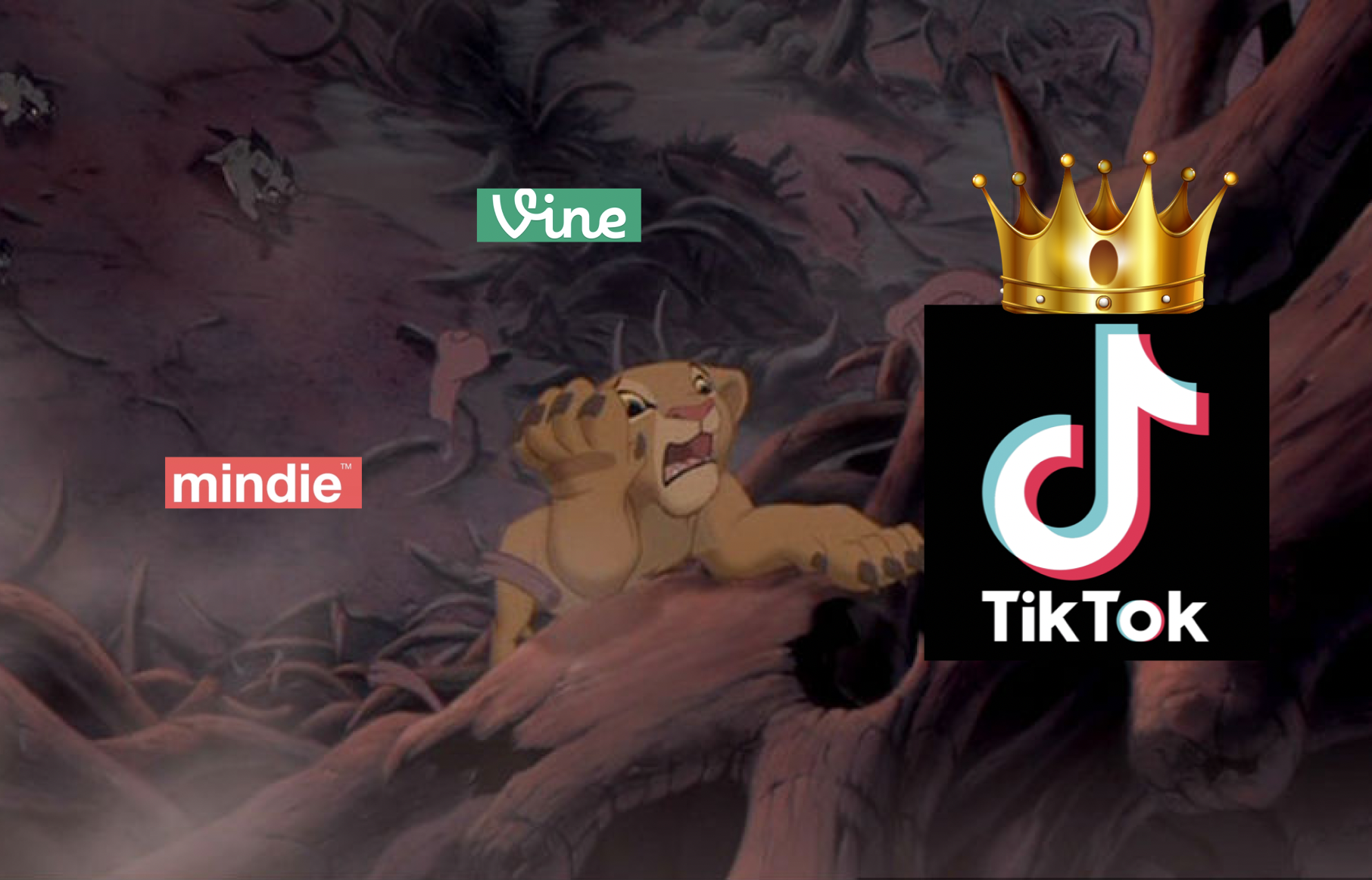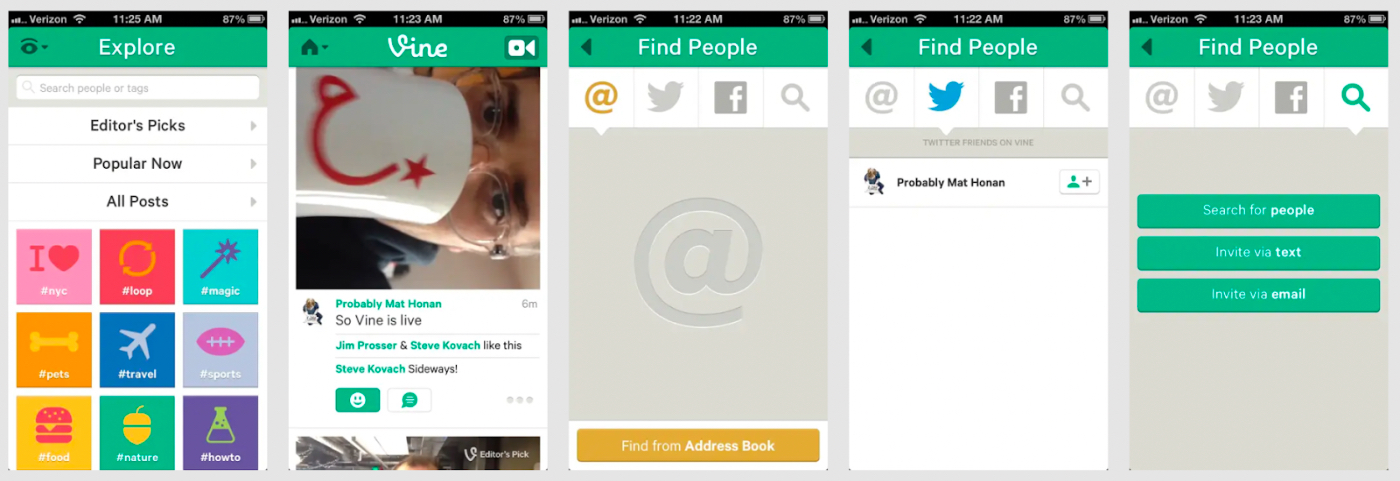
By David King and Mishti Sharma, who are currently deep in the boneyard building a living room for your phone.
Most successful consumer social products walk through a boneyard of failures before achieving victory. Before TikTok came Vine, before Tinder came Match.com, and before Instagram and Snap came Flickr. Each of these groups shared the similar high-level ideas of social video, dating, or social photos. But the boneyard often hid big ideas in plain sight. "There are very few genuinely new ideas," as Marc Andreessen observes. "Invention happens over long periods of time, by lots of very smart people playing each others’ ideas against each other."
Why do some consumer social products finally make it big after a series of misses? Part of the magic often hides within UX details — particularly, those that help people make fewer decisions and take fewer risks. The more opinionated an app is about how it should be used, the easier it is for users to act without fear of rejection. Products benefit from giving people the plausible deniability to say: “I’m not seeking attention, I’m just doing what this app tells me to do!”
To see how this works in practice, let’s observe a breakthrough UX approach that transformed a category with multiple previous failures— short-form looping video—to create one of the largest successes of all time.
Video didn't kill the video star (UX did)
Today, TikTok has edged out Google as the most visited domain in the world, according to Cloudflare. When the app first launched, however, it was far from obvious that it would work, because it had come after a long line of failed short-form looping video products:
- In 2012, Vine introduced a 6-second looping video app that Twitter acquired pre-launch
- In mid 2013, Instagram launched its own 15-second video feature
- In late 2013, Mindie launched a TikTok-like vertical snapping consumption format with background music
Despite early visibility and excitement, none of these products sustained momentum. Vine’s creators left Twitter within two years, and the product eventually shut down. Instagram videos never broke out as a unique format, and the app is now pushing its Reels feature, which copies TikTok’s novel UX. Mindie fizzled due to music label woes.
Given this boneyard of failures, you might have concluded that short-form looping video was dead. But at the same time, across the ocean, TikTok (then known as Musical.ly) was just getting started. What was different?
We’ll focus our comparison on Vine vs. TikTok. Vine's UX placed an enormous amount of decision-making baggage upon users. TikTok, on the other hand, gave users just one easy option: open the app and watch entertaining videos. Let's start with onboarding.
Don't stop me now
Vine presented many hurdles before you could watch your first video. First, you needed to decide whether to login with Twitter or email. If you chose Twitter, after two confirmation steps, you had to type your name and number. Then, you had to enable location, and lastly, enable push notifications.
^Vine onboarding from 2013
In contrast, as soon as you opened TikTok for the first time, you saw entertaining videos—time to satisfaction was instant. You didn’t have to worry about making an account, let alone following creators, channels, or friends. You only saw the option to create an account if you tapped the profile icon at the bottom of the app.
^TikTok onboarding from 2018
Tell me what I want (what I really really want)
The consumption UX of both apps underscores how many more decisions Vine users had to make to have a successful video-browsing experience.
Vine divided its UX into two traditional surfaces: Home and Explore. Home showed you content you opted into receiving, whereas Explore showed you things you might not know about yet. Vine’s Explore screen asked if you were more interested in “Editor’s Picks,” “Popular Now,” or “All Posts.” You could search the app or to click into a specific hashtag. As a new user, you wouldn’t know what each term meant or which you should care about. Decisions. Stress. Ugh.
Vine’s “Find Friends” process was comparatively heavy, too. You had four tabs available: contacts, Twitter, Facebook, and search. Should you trust this new app with your contact list? Should you follow people from your address book, Twitter, or Facebook? Would people think it’s weird if you follow them? Should you feel bad if they don’t follow you back?
In contrast, TikTok integrated the explore-exploit process into one tab. You never had to decide which tab to view—you just had to swipe to the next video when you were done with the current one. You also never had to follow anyone to see great content, because the app learned about your taste as you watched videos.
^Vine consumption UX from 2013Eugene Wei emphasized the importance of TikTok’s single-page format in his post Seeing Like an Algorithm:
“[TikTok’s] entire screen is filled with one video. Everything you do from the moment the video begins playing is signal as to your sentiment towards that video. Do you swipe up to the next video before it has even finished playing? Did you watch it more than once, letting it loop?...Did you share the video through the built-in share pane?…The default UI of our largest social networks today is the infinite vertically scrolling feed...As you scroll up and past many stories, the algorithm can’t “see” which story your eyes rest on…if the user doesn’t press any of the feedback buttons like the Like button, is their sentiment towards that story positive or negative? The signal of user sentiment isn’t clean.”
Get in, loser: we'll bring the party to you
TikTok's consumption UX wasn’t the only simplification that helped it succeed. Just as importantly, the app helped new creators—even those without followers!—get attention for their videos, lessening their fear of rejection. When a creator posted a video, TikTok showed it to a sample audience and then expanded to bigger targeted audiences if it did well—a form of a recursive publishing feedback loop. Creators with no followers could still reap rewards for videos that were funny and understandable by anyone. This was uniquely powerful for the medium of short-form video, which suits jokes, dances, and aesthetics with wide appeal.
TikTok also nailed music licensing to help video creators use soundtracks, resulting in meme patterns that softened the risk of creation. (Vine lacked licensed music, and Mindie got embroiled in lawsuits with its longer soundtrack excerpts). TikTok creators often riffed on existing soundtrack trends instead of trying novel combinations, which gave them plausible deniability for creating something new. ("I'm just following what everyone else is doing on this app!") In fact, 40% of early TikTok (Musical.ly) videos originated from creators watching a video and then cloning its soundtrack to make their own.
The Only Subscription
You Need to
Stay at the
Edge of AI
The essential toolkit for those shaping the future
"This might be the best value you
can get from an AI subscription."
- Jay S.
Join 100,000+ leaders, builders, and innovators

Email address
Already have an account? Sign in
What is included in a subscription?
Daily insights from AI pioneers + early access to powerful AI tools










Comments
Don't have an account? Sign up!
Great article! Just one nit - You don't have to go through the "plus button" top bar to post on Instagram, you can single finger swipe right on the consumption experience to instantly enter the camera.
They could do a better job at discoverability, but it isn't quite the journey you described :)
Hopefully all these crap apps will not last... for the sake of the humankind---
Tiktok is 50% of far-right messages/videos, 49% body showing
No disagreement with the analysis and yet. What we're training ourselves on is a world without "friction" when (specifically in social) what we actually NEED requires work. When cheap processed food came along, it was a huge success, but now we're dealing with the consequences.
Epic.